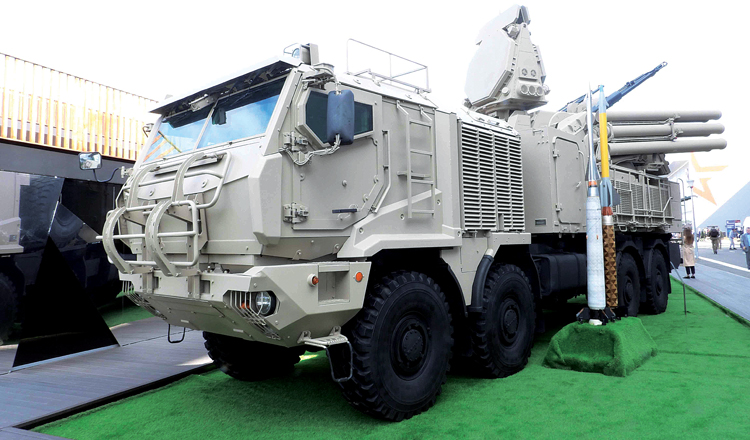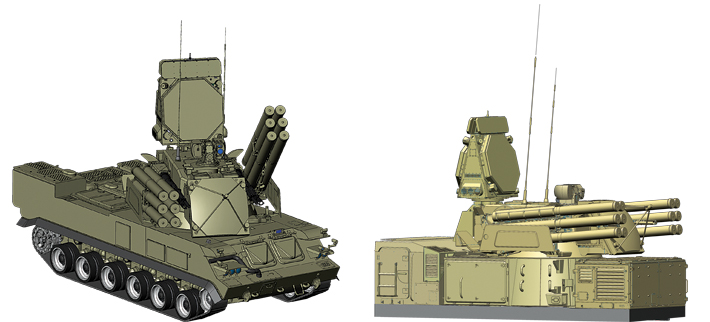INDIAN ARMED FORCES CHIEFS ON OUR RELENTLESS AND FOCUSED PUBLISHING EFFORTS

SP Guide Publications puts forth a well compiled articulation of issues, pursuits and accomplishments of the Indian Army, over the years

"Over the past 60 years, the growth of SP Guide Publications has mirrored the rising stature of Indian Navy. Its well-researched and informative magazines on Defence and Aerospace sector have served to shape an educated opinion of our military personnel, policy makers and the public alike. I wish SP's Publication team continued success, fair winds and following seas in all future endeavour!"

Since, its inception in 1964, SP Guide Publications has consistently demonstrated commitment to high-quality journalism in the aerospace and defence sectors, earning a well-deserved reputation as Asia's largest media house in this domain. I wish SP Guide Publications continued success in its pursuit of excellence.
- Indian Armed Forces gets the first Woman Director General of Medical Service (Army)
- General Upendra Dwivedi takes over as the Chief of the Army Staff
- Rajnath Singh assumes charge as Defence Minister for the second consecutive term
- Prime Minister witnesses 'Bharat Shakti' – a Tri-Services Firing and Manoeuvre Exercise in Pokhran, Rajasthan
- Interim Defence Budget 2024-25 — An Analysis
- Union Defence budget 2024
Pantsir-S1M Short-Range Air Defence Missile and Gun System

The Pantsir-S1 air defence missile and gun system is shortrange, last stand protection against high-precision weapons, like the cruise missile raids, and manned aircraft with onboard weapons. The Pantsir-S1 ADMGS successfully copes with this task due to missile and gun armament with solid engagement area of 20 rm in range and 15 km altitude, radar-optical target detection and weapon guidance systems. The weapon systems carry considerable ammunition load of 12 surface-to-air missiles and 1400 pieces of 30 mm gun rounds. And all this is installed on a single truck chassis with capacity of around 20 tons. the weapon system allows engagement of targets on the move, providing air defence of both stationary objects, as well as mobile units.
What has changed since the creation of the weapon system at the turn of the 21st century? Primarily, the air threats have changed considerably, an extensive experience of the weapon system combat employment has been gained, the trends of further evolution of the air attack assets have been determined, the real danger posed by the mini-drones, which currently perform not only reconnaissance, but also assault missions, has been realised.
It appears, the disputes on whether the MLRS projectiles are the targets for AD systems have wrapped up. Obviously, they are, both from the point of view of the weapon system self-defence, as well as for protection of the defended object.

Besides, how do the short-range weapon system primary targets, i.e. cruise missiles, evolve? The production of subsonic cruise missiles is being curtailed. The cruise missiles of the nearest future are hypersonic. Undoubtedly, such situation accelerates the development and manufacture of these missiles, especially due to termination of intermediate-range and shorter-range missiles treaty
Upon analysis of the above aspects, the KBP Design bureau has made a decision to create a new generation Pantsir-S1M shortrange air defence missile and gun system. The implemented engineering solutions meet all the current and future requirements imposed on countering modern air threats and outperform the existing counterparts. Compared to the serially produced Pantsir-S1 system, the new Pantsir-S1M employs high-velocity SAM with the engagement range of up to 30 km and altitude of up to 18 km, with curtain-type kinetic action warhead thrusting a cloud of high-density fragments in front of the target following the uplink command. This provides effective engagement of a target due to kinetic hypersonic velocity imparted to the SAM after lift-off; low deceleration at the trajectory and added velocity of oncoming target; alignment of target and penetrators coverage area at ultra-high striking velocities.
The improvements implemented in the new Pantsir-S1M weapon system do not involve introduction of the new SAM type only. In order to enhance the efficiency of “standard” SAM employment the control system has also been upgraded with the number of targets kept on fine tracking in radar mode increased up to four.
The combat vehicle of the new Pantsir-S1M system comprises the following recently-designed sub-systems:
- The search radar with two phased antenna arrays (PAAs), two transceiving systems, 2D electronic scanning in elevation and azimuth, providing the following:
- the opportunity to detect ballistic targets, particularly, due to the employment of the sector-search mode
- increase of the detection range up to 80 km and increase of the number of detected targets up to 40 pcs
- increased reliability due to redundancy of the basic components of the PAA with the transceivers
- The multifunctional tracking radar (TTR) with the increased surface of the PAA and increased power of the transmitter providing:
- increase of the detection and acquisition range of a target with RCS=1 m2 by 1.5 times
- increase of the transceiver band by 2 times
- decrease of the target tracking errors
- simultaneous fine tracking of 4 targets
- The optronic system (OES) provides automatic and semi-automatic determination of the missile and target coordinates in the optical band, surveillance of the airspace and target search by the operator, measuring the range to the target. The OES comprises thermal imaging and TV channels, laser rangefinder, TV auto-tracker and optronic sensor for localising the SAM. Thus, the OES provides operation under the condition of reduced transparency of the atmosphere. The system performance range surpasses the range of the meteorological visibility by 5 – 10 times, which enables target detection and determination of target front and side projections coordinates with the specified accuracy.
- The central computer with increased performance and extended memory capacity, high-level language programming allows data recoding.
- The workstations with console computers instead of displays with enhanced ergonomics and functional capabilities of the mapping computer and imagery data recorder.
The integrated multimode and multispectral radar-optical guidance system operating in dm-, mm- and IR-wavebands provides for high immunity of the Pantsir-S1M system to jamming and, thus, for sharp rise of combat performance.
The mobile version of the Pantsir-S1M system comprises of combat vehicle (up to 6 CVs in a battery) with two types of surface-to-air missiles, 30-mm rounds, transporting-loading vehicle (one vehicle per 2 CVs), maintenance assets and training aids.

The modular concept of the Pantsir-S1M system design enables its mounting on wheeled and tracked chassis, as well as employment as a stationary version. The modular configuration concept enables to employ the system for protection of oil rigs, vital administrative, military-tactical and other pin-point objects, as well as to install it on railway platforms. This results in low-cost integration of the weapon system into an existing system of maintenance, training and logistics being in service with a particular customer. The said concept also enables system customisation for the specific geographical conditions of system application by a customer.
The modern air defence missile and gun system application environment strictly requires complete integration of the system data acquisition assets into the unified air defence system of a customer. The said necessity is stipulated by the following factors:
- availability of integrated targets surveillance data on all levels and all components of the unified air defense system
- complicated topographical conditions require flexible target distribution not only between the CVs in a battery but also within the unified air defence system
- steady increase of the number of HPWs and UAVs among employed air threats stipulates for peculiarities of anti-aircraft systems application involving the capability to operate a CV without radar emission while gathering all required information from neighboring CVs and external search radars.
Availability of an inherent mapping computer employing digital area maps in the system allows for effective automatic mission planning taking into account the specific geotopographical conditions of a customer.
The Pantsir-S1M new generation weapon system is highly efficient in repulsion of contemporary and advanced HPW raids, which makes it the major component of a SHORAD system and an unrivaled solution for forming an indispensable and sufficient AD system under actual economic conditions.





